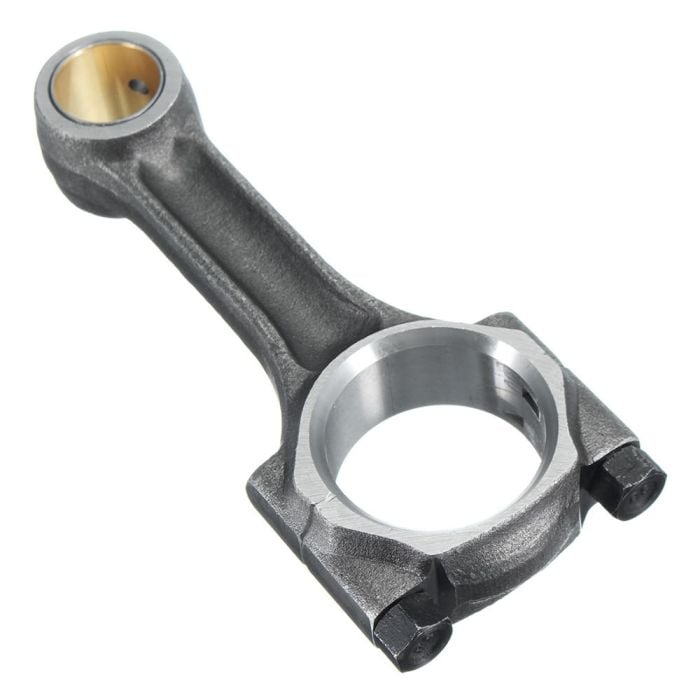Maintain peak performance with a reliable clp engine.
Maintain peak performance with a reliable clp engine.
Blog Article
Exactly How a Clp Engine Can Enhance Efficiency in Different Industries
The advent of CLP engines notes a substantial change in functional performance throughout numerous fields, driven by their capacity to enhance fuel usage and minimize downtime. Industries such as manufacturing and logistics stand to get substantially from their durable design and constant power output, which assure to streamline operations and improve performance. As organizations significantly focus on sustainability together with effectiveness, the role of CLP engines ends up being a lot more crucial. What continues to be to be seen is just how these improvements will form the future landscape of industrial operations and their impact on wider financial trends (clp engine).
Overview of CLP Engines
CLP engines, or Continuous Liquid Propellant engines, represent a substantial advancement in propulsion innovation, particularly for room applications. These engines use a continuous feed system that permits for the continual expulsion of propellant, resulting in improved performance and performance contrasted to standard strong or hybrid propulsion systems. By keeping a consistent flow of liquid propellant, CLP engines can accomplish a lot more precise thrust control, which is critical for navigating spacecraft in different mission circumstances.
The layout of CLP engines incorporates innovative materials and cutting-edge fuel monitoring systems. clp engine. This results in minimized weight and increased dependability, necessary elements for long-duration room objectives. The constant procedure decreases the risk of combustion instability, a typical challenge in standard rocket engines.

Advantages in Production
The manufacturing of Continuous Liquid Propellant (CLP) engines provides a number of noteworthy benefits that improve both effectiveness and cost-effectiveness. Among the main advantages is the streamlined production process, which lowers the complexity connected with conventional propulsion systems. By making use of fluid propellant, manufacturers can attain better accuracy in engine performance, causing optimized power output and lowered waste.
Furthermore, CLP engines assist in a higher level of modularity, enabling less complicated integration right into different manufacturing lines. This versatility can substantially reduce preparations and boost general functional adaptability. Using CLP modern technology additionally tends to reduce the requirement for comprehensive maintenance because of less moving components, which equates into lowered downtime and functional prices.

Applications in Logistics
Leveraging Continuous Fluid Propellant (CLP) engines in logistics supplies significant advantages in functional efficiency and dependability. These engines give a robust solution for various transport needs, allowing page the smooth movement of goods across substantial ranges. The fundamental style of CLP engines enables regular power result, which translates right into smoother and a lot more predictable transportation routines.
Among the essential applications of CLP engines in logistics remains in durable products transportation, where they can drive both ground and aerial vehicles. Their ability to preserve high performance under varying lots problems guarantees that delivery timelines are met, thus boosting consumer contentment. Furthermore, CLP engines can be incorporated into automated logistics systems, assisting in real-time monitoring and enhancing path planning.
Additionally, the resilience of CLP engines decreases maintenance downtime, allowing logistics business to optimize their operational capabilities. This is especially beneficial in warehousing procedures, where efficiency in dealing with and moving items is crucial. As logistics proceeds to advance, the integration of CLP engines represents a forward-thinking method that not only boosts performance but also sustains the sector's growing needs for reliability and speed.
Effect On Power Effectiveness
How do Constant Liquid Propellant (CLP) engines enhance power effectiveness in transportation? CLP engines use a consistent flow of liquid gas, maximizing burning processes and preserving a steady drive result. This design decreases energy losses connected with typical burning engines, where fuel shipment can vary and lead to inadequacies.
The constant procedure of CLP engines enables an extra efficient thermal cycle, resulting in higher certain impulse compared to standard engines. clp engine. This converts to minimized gas intake for the very same quantity of job done, considerably decreasing operational prices across different transport industries, including air travel and maritime industries
Furthermore, the ability of CLP engines to maintain optimum efficiency Find Out More under varying tons problems minimizes the need for frequent acceleration and slowdown, further improving fuel effectiveness. Boosted power effectiveness not only adds to set you back financial savings yet likewise leads to decrease greenhouse gas emissions, aligning with global sustainability goals.
Future Trends and Innovations
Arising advancements in Constant Fluid Propellant (CLP) engine technology promise to revolutionize the landscape of transportation efficiency and sustainability. As markets pivot towards greener options, CLP engines stand at the leading edge, integrating cutting-edge products and layout methods that boost performance while lessening environmental effect.
Among the most encouraging patterns is the fostering of hybrid systems that incorporate CLP engines with renewable resource resources. This harmony can maximize fuel usage and minimize exhausts, straightening with international sustainability goals. Moreover, innovations in computational liquid characteristics (CFD) are facilitating the style of more aerodynamically efficient engines, causing reduced drag and improved fuel effectiveness.
Furthermore, the growth of clever monitoring systems is established to boost functional performances. These systems take company website advantage of information analytics and IoT technology to maximize engine efficiency in real-time, making certain that the engines operate within their most efficient criteria.
As research continues to check out alternative propellant solutions-- such as biofuels and artificial gas-- the future of CLP engines looks encouraging. By harnessing these innovations, industries can not just improve their performance yet also contribute dramatically to a cleaner, extra sustainable future in transport.
Final Thought
In conclusion, CLP engines stand for a substantial development in effectiveness across multiple markets. The integration of sophisticated products and less moving parts decreases upkeep requirements, while placement with sustainability goals placements CLP engines as a pivotal technology for the future.
Report this page